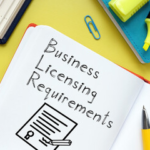At the heart of Composite Risk Management (CRM) lies a decision-making mechanism primarily utilized for the identification and regulation of risks. This approach outlines protocols to comprehend, assess, and act appropriately against possible detrimental outcomes. The judicious decisions derived from implementing the CRM process strike an apt equilibrium between risk and cost while enabling successful execution of tasks.
So how does one define the objective behind composite risk management? Its primary goal is to support both individuals and organizations in dampening the effects of unfortunate events, threats, or hazards. By pinpointing potential risks and introducing effective control measures, it ensures organizational safety as well as productivity. Above all else lies its commitment towards fostering a culture that prioritizes managing risks with one governing principle: “Safety First”.
The Relationship between CRM and Decision Making
Plunging into the labyrinth of risk management, one stumbles upon the cardinal function of Composite Risk Management (CRM). It’s an operation that considerably sways informed decision-making. But what indeed is this enigma called CRM in risk management? At its core, CRM unfurls like a panoramic strategy providing those at helm with necessary contrivances and tenets to scrutinize, distinguish and restrain potential pitfalls linked to any action or task in both military and corporate landscapes.
Amidst the intricate web of decision-making processes, CRM asserts itself as indispensable by empowering decision-makers to gauge risks through numerical and abstract lenses. Guiding them along paths strewn with jeopardies ranked by their threat intensities, it enables effective crafting and execution of control measures. All this while ensuring harmony between levels of risk endurance and organizational objectives. Thus unfolds the profound influence of CRM – it presents a methodical proactive blueprint for grappling uncertainties which boosts the caliber of decisions made.
- CRM, or Composite Risk Management, is a crucial function in risk management that significantly influences informed decision-making.
- It serves as an extensive strategy providing leaders with necessary tools and principles to analyze, identify and control potential risks associated with any action or task within military and corporate environments.
Navigating through the complex matrix of decision-making processes, CRM proves itself to be essential.
- It empowers decision-makers to assess risks from both numerical and abstract perspectives.
- By guiding them along routes lined with hazards ranked by their threat intensities, it facilitates effective creation and implementation of control measures.
- Simultaneously ensuring balance between levels of risk tolerance and organizational goals.
The profound impact of CRM unfolds as it offers a systematic proactive plan for handling uncertainties which enhances the quality of decisions made.
- The role of CRM is not just reactive but also proactive – identifying potential pitfalls before they occur allows for better planning and mitigation strategies.
- This ultimately leads to more informed decisions that align closely with an organization’s long-term objectives while minimizing potential harm.
In essence, the relationship between CRM and Decision Making is symbiotic: one cannot exist without the other in robust business operations. As we delve deeper into this intricate connection:
- We understand how integral CRM is in shaping strategic choices at every level – be it operational, tactical or strategic
- We realize that sound decision making relies heavily on a well-structured approach towards risk assessment – something that CRM provides
- Lastly, we see how implementing effective CRMs can lead to improved business performance by reducing unnecessary costs related to poor risk management practices
Key Phases of the Composite Risk Management Process
The overarching design of the Composite Risk Management process is an embodiment of multifaceted objectives in a risk management system’s cosmos. Prime among these objectives are the identification of looming hazards, assessing their anticipated repercussions, sculpting measures to tame these risks and deploying those measures effectively to mitigate the detected threats. This structured methodology marries risk management with decision-making processes, thus fortifying organizations’ capability to diminish risks and exploit opportunities.
What serves as the function of a risk management system? At its core, it operates as a prism that facilitates recognition, evaluation and regulation of potential risks. CRM methodically unfolds across five stages: hazard pinpointing, hazard assessment, control development coupled with risk decision making, control implementation followed by supervision and appraisal. The interaction between each stage flows effortlessly into one another; creating a cyclic pattern that encourages continuous refinement and enhancement. This model places equal emphasis on proactive strategies along with reactive countermeasures ensuring comprehensive coverage for risk management throughout all tiers within an organization. Effective deployment of CRM empowers organizations to strike equilibrium—optimizing their resources while maintaining strategic goals within agreeable parameters for risking taking.
The Role of CRM in Identifying Potential Risks

Navigating through the intricacies of Composite Risk Management (CRM) is pivotal in the preliminary unearthing of potential hazards. By employing a methodical procedure, CRM equips stakeholders with an ability to gauge the probability of specific threats and to pinpoint their severity and ensuing impact should they come into being. The comprehension and application of five paramount steps within this complex system form a cycle which has demonstrated its indispensability in proficient risk management.
The first rung on this ladder, Identifying Hazards, demands exhaustive scrutiny of both external and internal landscapes to spot those zones vulnerable to peril. Ascending to step two, Assessing Hazards requires grasping not only the potential fallout but also how hard-hitting any realized risk could be.
At stage three – Developing Controls and Making Decisions – protective fortifications are constructed that arm us against looming threats. The fourth phase propels these blueprints into action as Implementing Controls installs preventative strategies set out earlier.
Finally, we arrive at Supervising & Evaluating; an ongoing vigilance ensuring measures put forth are efficaciously implemented while continually reassessing for adaptability amidst shifting circumstances. Every layer is integral—collectively forming a shield mitigating or reducing exposure to impending dangers.
Assessing Hazards through the Lens of CRM
In the labyrinth of Composite Risk Management (CRM), hazard assessment unfurls as an orderly and forward-thinking endeavor. The bedrock objective is akin to unearthing every conceivable safety peril lurking within a particular operation or process. CRM, in this scenario, expands its gaze beyond merely tangible hazards; it ensnares operational, procedural, and even elusive dangers with potential harm-inflicting capacity.
The relentless application of CRM principles in assessing hazards acts as a bulwark against unexpected incidents and offers mitigation for looming perils. Above all else, CRM’s tenacious pursuit of this task underscores an unwavering dedication to safety. This process demands meticulous scrutiny and comprehensive examination of each risk identified during the overarching hazard review.
Moreover, hazards are not viewed as solitary threats but evaluated within their broader context to account for possible domino effects and contributions towards systemic risks. By harnessing the robust structure of CRM’s objective frameworks, stakeholders can achieve more than just exhaustive assessments – they secure effective tools that decrease overall risk substantially.
Developing Risk Control Measures with CRM
In the labyrinth of Composite Risk Management, step four is akin to a puzzle piece – developing risk control measures. This stage immerses itself in the development of strategies with one objective: to obliterate hazards or at least curtail the associated risks. The weight this phase carries can scarcely be expressed enough; it lays down stepping stones towards a sanctuary – where efficiency and safety coexist.
Herein, we juggle multiple elements like resources at our disposal, cost-benefit analyses, substitute solutions and the ripple effect – be it positive or negative – of each risk control measure under scrutiny.
The spectrum of these measures could vary from introducing new safety mantras or equipping staff with extra training. Regardless of their form, their potency lies in how precisely they tackle the looming risks and reduce chances for unwanted incidents. These chosen safeguards rise above potential threats that were previously brought into light and evaluated during earlier stages of CRM.
Moreover, they are moulded keeping in mind an equilibrium between available resources and risk factors so as not to undervalue any possible threat nor let it slip through unnoticed.
Implementing CRM Controls for Risk Reduction
The necessity for the accurate execution of Composite Risk Management (CRM) controls in any entity cannot be overstated, forming a cornerstone to risk minimization. This task demands the strategic maneuvering based on pre-set risk control measures aimed at mitigating looming hazards. It’s not merely about crafting effective CRM controls but also about their sufficient implementation, which acts as reins and buffers against an array of risks.
Such a control system doesn’t exist within narrow confines; rather it spans across numerous actions like compliance with organizational protocols, supervisory mechanisms, usage of appropriate tools and machinery, along with personnel training.
Determining priority when deploying CRM controls is key – this should be dictated by the weightage and impact potential risks carry. The focus must remain on addressing high-risk situations quickly yet competently. One must bear in mind that regular monitoring and evaluation are non-negotiable aspects of implementing these controls – only through such measures can one assess their efficacy accurately.
This continuous appraisal paves way for necessary adjustments in due time thereby enhancing the productivity of existing controls. Ultimately, all roads lead to fostering a culture within organizations where every single team member is actively contributing towards reducing risk via hands-on application of CRM Controls.
FAQ
The overriding idea behind CRM is to deliver a coordinated and methodical approach for recognizing, evaluating, and mitigating risks that emerge in any organization or operation.
Undeniably, CRM plays a fundamental role in decision-making. It buttresses this process by offering an organized way to pinpoint, appraise, and administer risks. This indispensable data aids in formulating knowledgeable decisions aimed at curtailing potential adverse impacts.
The salient phases encompassed within the CRM procedure entail recognizing hazards; assessing these hazards to ascertain associated risks; concocting controls while reaching risk-based decisions; implementing said controls; as well as supervising and examining their effectiveness.
As a proactive measure, CRM assists in discerning possible threats before they escalate into severe problems. It involves systematically spotting hazardous situations that may culminate into damage or loss.
A comprehensive analysis of identified perils forms part of hazard assessment within CRM. This stage focuses on determining both severity and likelihood of each risk which consequently helps prioritize them accordingly.
The development phase within the realm of risk control measures underpins generating strategies geared towards eliminating or minimally reducing inherent risks. These devised control measures ought to be effective yet feasible along with being suitable & acceptable.
The structured methodology offered by these unique controls contributes significantly towards managing risks hence achieving reduction targets.Their implementation either eradicates identified hazards completely or lessens their impact including probability occurrence rates.
Supervision guarantees correct & effective implementation of CRM controls. In contrast, evaluation forms an ongoing process aimed at measuring effectiveness of both the overall CRM procedure & its controls while identifying areas that require further improvement.









